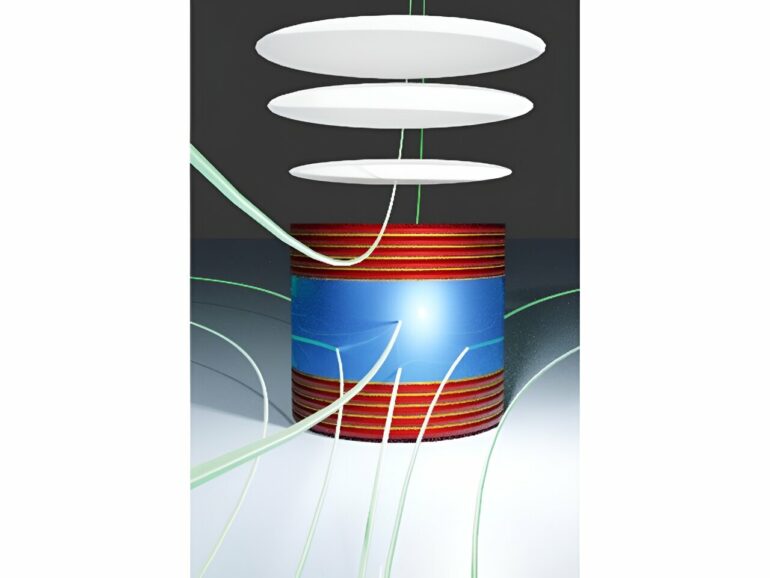Implantable biomedical devices—like pacemakers, insulin pumps and neurostimulators—are becoming smaller and utilizing wireless technology, but hurdles remain for powering the next-generation implants. A new wireless charging device developed by Penn State scientists could dramatically improve powering capability for implants while still being safe for our bodies, the researchers said.
The new device can harvest energy from magnetic field and ultrasound sources simultaneously, converting this energy to electricity to power implants, the scientists reported in the journal Energy & Environmental Science. It is the first device to harvest these dual-energy sources simultaneously with high efficiency and operate within the safety limits for human tissue, the team said.
“Our device may unlock next-generation biomedical applications because it can generate 300% higher power than the current state-of-the-art devices,” said Bed Poudel, research professor in the Department of Materials Science and Engineering at Penn State and co-author of the study.
“By combining two energy sources in a single generator, power generated from a given volume of the device can be significantly improved which can unlock many applications that were not possible before.”
Using this technology, battery-free bioelectronic devices could be miniaturized to millimeter-sized dimensions, making them easily implantable and allowing distributed networks of sensors and actuators to measure and manipulate physiological activity throughout the body. This would enable precise and adaptive bioelectronic therapies with minimal risks or interference with daily activities, according to the scientists.
More traditional implants like pacemakers are typically powered by batteries and charged using cables. But the lifespan of batteries is limited and surgery may be necessary to replace them, posing a risk of infection or other medical complications.
Charging or directly powering implants wirelessly could extend their lifespan, the scientists said. But conventional wireless charging technology used for cell phones and electric vehicles may not be ideal as implants continue to shrink.
“The problem is that as you make these implants less invasive by making them smaller and smaller, the efficiency of wireless charging becomes much lower,” said Mehdi Kiani, associate professor of electrical engineering at Penn State and co-author of the study. “To address this, you need to increase the power. But the problem is that high frequency electromagnetic waves could be harmful to the body.”
Magnetic field and ultrasound energy operating at lower frequencies are attractive options for wirelessly powering or charging implants, according to the researchers. Previous work by other scientists has focused on creating devices that can harvest one of these sources of energy, but not at the same time, the scientists said. However, this single source approach may not provide enough power to charge smaller future medical implants.
“Now we can combine two modalities in a single receiver,” said Sumanta Kumar Karan, a postdoctoral scholar in the Department of Materials Science and Engineering at Penn State and the lead author of the paper. “This can exceed any of the individual modalities because we now have two sources of energy. We can increase the power by a factor of four, which is really significant.”
The devices use a two-step process for converting magnetic field energy to electricity. One layer is magnetostrictive, which converts a magnetic field into stress, and the other is piezoelectric, which converts stress, or vibrations, into an electric field. The combination allows the device to turn a magnetic field into an electric current.
And the piezoelectric layer also can simultaneously convert ultrasound energy into an electric current, the researchers said.
“We have combined these sources of energy in the same footprint, and we can generate sufficient power that can be used to do the things that next generation implants will be asked to do,” Poudel said. “And we can do this without damaging tissue.”
Technology also has implications for powering things like wireless sensor networks in smart buildings. These networks do things like monitor energy and operational patterns and use that information for remotely adjusting control systems, the scientists said.
More information:
Sumanta Kumar Kumar Karan et al, Magnetic field and ultrasound induced simultaneous wireless energy harvesting, Energy & Environmental Science (2024). DOI: 10.1039/D3EE03889K
Provided by
Pennsylvania State University
Citation:
Dual-energy harvesting device could power future wireless medical implants (2024, February 21)



